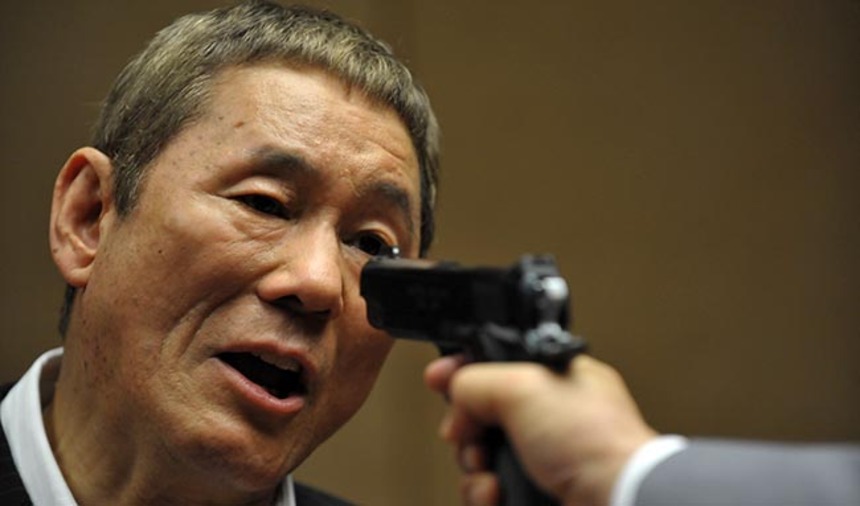TIFF 2012 Review: OUTRAGE BEYOND Brings Back the Violence

Any fan of Japanese Cinema from the last few decades knows: If there is a gun in your face, the last person you want to see on the other end is Takeshi Kitano (or rather his actor-ly persona Beat Takeshi). That no nonsense, guns-blazing side of Kitano took a hiatus for a few years while he pursued a more sensitive artistic side, but returned two years ago with his Yakuza comeback tour de force Outrage (you can find our review roundup here). One dose of Kitano ultra-violence wasn't nearly enough and the man has heard our pleas, returning with the second part of the saga, Outrage Beyond. While it has all the trappings of the middle chapter of what's bound to be a trilogy, the film is a worthy follow-up to Outrage and more of the excellent Japanese action we've come to expect from Kitano.
Warning: Outrage spoilers follow (but none from Outrage Beyond)
Things pick up a half a decade on from where we left off in Outrage, with Kato (Tomokazu Miura) now sitting atop the Sanno family after his betrayal of the former chairman. Otomo (Beat Takeshi) is safe in prison (Kato thinking him dead) while former Otomo soldier Ishihara (the dandy one with the funny glasses - Ryo Kase) sits as Kato's second in command. There is dissension in the Sanno ranks, as many of the old guard feel that Ishihara and other men have been promoted by Kato out of turn. They're also sore that Ishihara seems to be leading Kato by the nose into a more legitimate world of hedge funds and government cooperation that they aren't as familiar with.
A spark comes to the tinder in the form of organized crime inspector Kataoka (Fumiyo Kohinata), who is fed up with the lack of cooperation from the Kato/Ishihara regime and schemes to chop off its head using any means necessary. This includes courting conflict with the Kansai based Hanibishi Family, tracking down disgraced Otomo gun man Kimura (the one who took Otomo's blade to the face - Hideo Nakano), and even arranging an early release from prison for Otomo, one man who is sure to have a beef with Ishihara and Kato.
True to the first film, much of the drama is spelled out throughout the first half of the film in secret meetings and shot reverse-shot discussion. This evokes the great Japanese cinema of the 50s and 60s, but can prove a bit tedious for those not accustomed to the style or easily lost in the flow of Japanese surnames. But when the violence does kick off, it's all Kitano. Growling crime bosses, dispensable digits, and a particularly inventive use for the toys at the batting cages all make appearances.
While there is no official confirmation yet, Kitano loves trilogies and all signs seem to point to this being Outrage's middle chapter. Therefore it stands to reason that there is some inherent dissatisfaction in Outrage Beyond as is found in most middle chapters. But this is only slightly present at the film's conclusion and even with this film's somewhat less complex plot, Outrage Beyond is every bit a worthy successor to the title.







